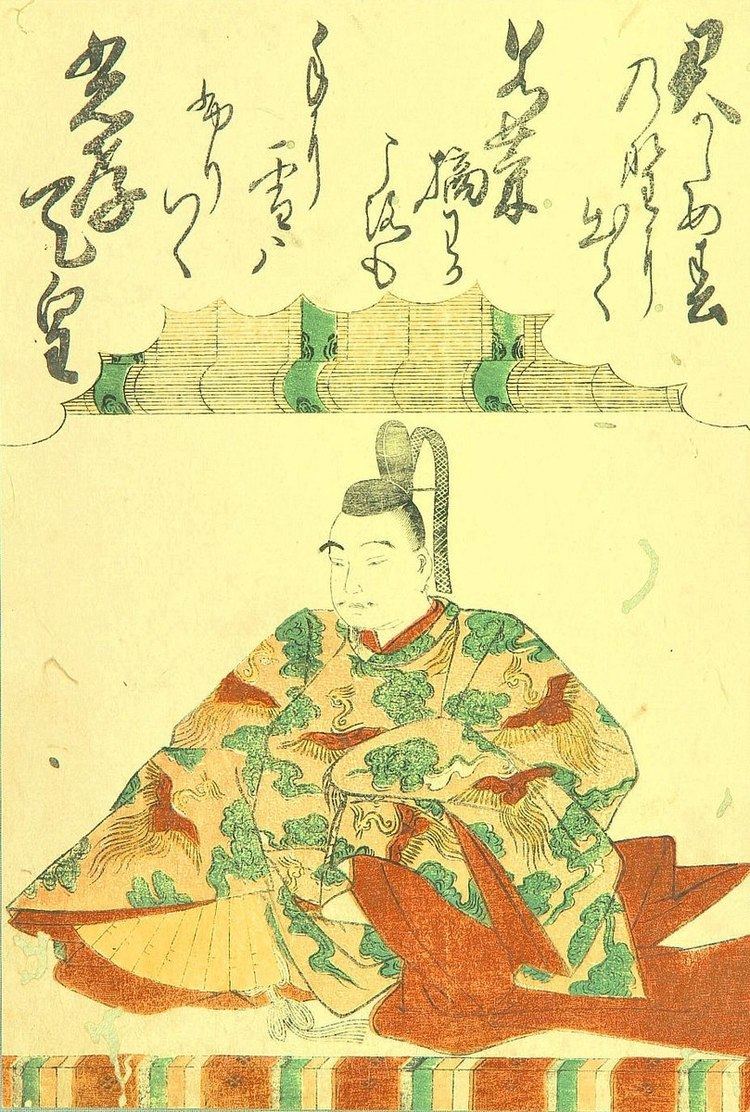Reign 884–887 Predecessor Yozei Died 887Heian Kyo (Kyoto) | Coronation 884 Name Emperor Koko | |
 | ||
Burial Nochi no Tamura n misasagi (Kyoto) | ||
Emperor Koko: Army Men vs Giant Cat
Emperor Kōkō (光孝天皇, Kōkō-tennō, 830 – August 26, 887) was the 58th emperor of Japan, according to the traditional order of succession.
Contents
- Emperor Koko Army Men vs Giant Cat
- Traditional narrative
- Events of Kks life
- Kugy
- Eras of Kks reign
- Consorts and children
- Poetry
- References

Kōkō reigned from 884 to 887.
Traditional narrative
Before his ascension to the Chrysanthemum Throne, his personal name (imina) was Tokiyatsu (時康親王) or Komatsu-tei. He would later be identified sometimes as "the Emperor of Komatsu." This resulted in the later Emperor Go-Komatsu adopting this name (go- meaning "later", so "Later Emperor Komatsu" or "Emperor Komatsu II").
Tokiyatsu Shinnō was the third son of Emperor Nimmyō. His mother was Fujiwara no Sawako.
Kōkō had four Imperial consorts and 41 Imperial sons and daughters.
Events of Kōkō's life
The first kampaku Fujiwara no Mototsune was influential in the process by Kōkō became emperor. At the time Emperor Yōzei was deposed, Prince Tokiaytsu was already Governor of Hitachi and Chief Minister of Ceremonies (Jibu-kyō, 治部卿)
According to Kitabatake Chikafusa's 14th-century account, Mototsune resolved the problem of succession by simply going to visit Tokiyatsu-shinnō, where the kampaku addressed the prince as a sovereign and assigned imperial guards. The prince signaled his acceptance by going into the imperial palaquin, which then conducted him to the emperor's residence within the palace. Curiously, he was still wearing the robes of a prince when he decided to take this ride into an entirely unanticipated future.
During his reign, Kōkō revived many ancient court rituals and ceremonies, and one example is the imperial hawking excursion to Serikawa, which had been initiated in 796 by Emperor Kanmu. This ritual event was revived by Kōkō after a lapse of 50 years.
The actual site of Kōkō's grave is known. This emperor is traditionally venerated at a memorial Shinto shrine (misasagi) at Kyoto.
The Imperial Household Agency designates this location as Kōkō's mausoleum. It is formally named Kaguragaoka no Higashi no misasagi.
Kugyō
Kugyō (公卿) is a collective term for the very few most powerful men attached to the court of the Emperor of Japan in pre-Meiji eras.
In general, this elite group included only three to four men at a time. These were hereditary courtiers whose experience and background would have brought them to the pinnacle of a life's career. During Kōkō's reign, this apex of the Daijō-kan included:
Eras of Kōkō's reign
The years of Kōkō's reign are more specifically identified by more than one era name or nengō.
Consorts and children
Kōtaigō: Princess Hanshi (班子女王) (833–900), daughter of Imperial Prince Nakano (son of Emperor Kanmu)
Nyōgo: Fujiwara no Kamiko (藤原佳美子) (?–898), daughter of Fujiwara no Mototsune (藤原基経)
Nyōgo: Taira no Motoko/Tōshi (平等子), daughter of Taira no Yoshikaze (平好風)
Nyōgo: Fujiwara no Motoyoshi (藤原元善), daughter of Fujiwara no Yamakage (藤原山蔭)
Koui: Shigeno no Naoiko (滋野直子)
Koui: A daughter of Sanuki no Naganao (讃岐永直の娘)
Koui: A daughter of Fujiwara no Kadomune (藤原門宗の娘)
Court lady: Princess Keishin (桂心女王), daughter of Prince Masami (正躬王)
Court lady: Sugawara no Ruishi (菅原類子), daughter of Sugawara no Koreyoshi (菅原是善)
Court lady: A daughter of Tajihi clan (多治氏の娘)
Court lady: A daughter of Fuse clan (布勢氏の娘)
(from unknown women)
Poetry
Emperor Kōkō is well-remembered for his poetry, and one of his waka appeared in the Ogura Hyakunin Isshu (no. 15):
